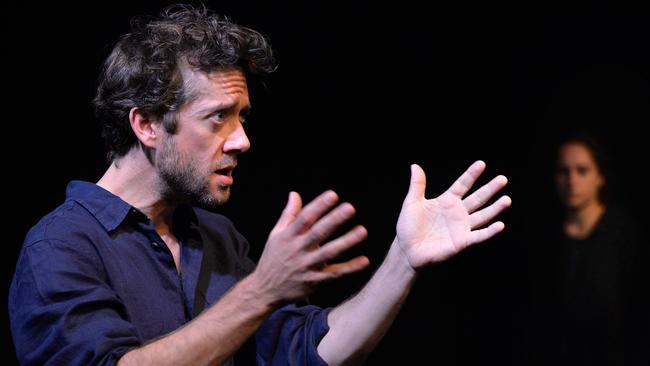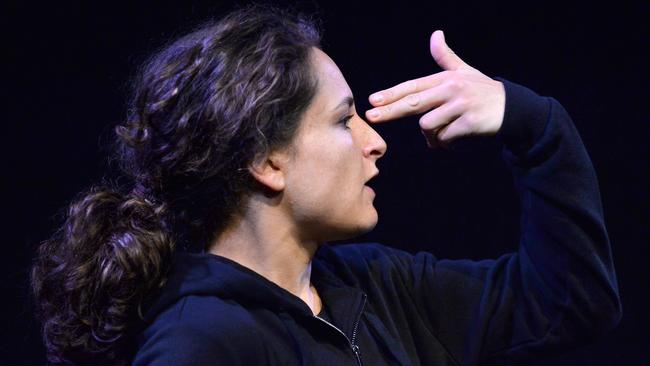Adelaide Fringe review 2018: Borders by Henry Naylor
FOR lightning to strike three times in succession is a rare thing indeed, but UK writer Henry Naylor follows his previous Fringe hits Echoes and Angel with another extraordinarily powerful chapter in his exploration of the Middle East.

Theatre
Don't miss out on the headlines from Theatre. Followed categories will be added to My News.
Borders by Henry Naylor
Theatre
Rating: *****
The Studio, Holden Street Theatres
Until March 18
FOR lightning to strike three times in succession is a rare thing indeed, but UK writer Henry Naylor follows his previous Fringe hits Echoes and Angel with another extraordinarily powerful chapter in his exploration of the Middle East.
With Borders, he successfully ties together the story of a young woman caught in the ongoing Syrian refugee crisis with that of a photojournalist who unwittingly documented the rise of Osama bin Laden.
Both characters are artists, but while she is fiercely uncompromising in her approach to both creativity and politics, he sells out to the lure of celebrity and success.
Avital Lvova, who was mesmerising in Angel, once again captivates with the almost motionless, internalised intensity behind her eyes, then explodes into physical action sequences as her unnamed character evades threats ranging from zealots to bombs.
As photographer Sebastian Nightingale, Graham O’Mara is more wild-eyed and demonstratively animated, and gets the lion’s share of laughs in the frequently funny dialogue … even if the jokes are often at his character’s own expense.
There are certain, now familiar, tropes that Naylor uses — such as cutting between the two apparently unconnected character’s stories with increasing frequency and pace, until their worlds collide in the most unexpected of ways.
What remains fresh is the perspective he brings to our relationship with the Middle East — in particular this play’s assertion that Bin Laden has actually succeeded in his mission to create a divide between the Western and Muslim worlds, a rot in which terrorists can grow like an infestation of woodlice.



